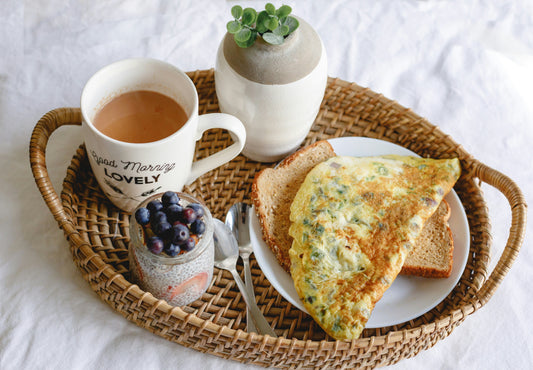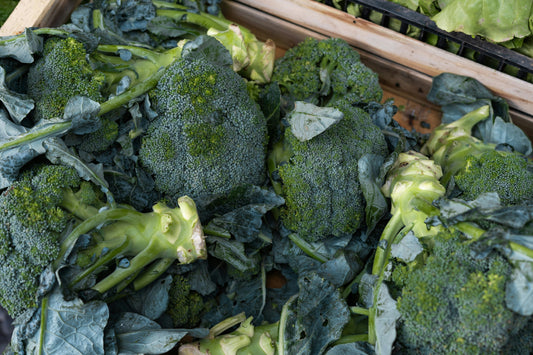We have all read the articles where celebrities or Instagram babes share their real food diets. Starting their day with fancy smoothies made from; coconut, mushroom powder, five different herbs you have never heard of, and three types of kale, or they have a fancy food delivery service for every meal. This is not the only way to eat real food. For most people this situation is not real life, most people have some sort of budget to consider when buying food, they have other people to feed, and have limited time to source and cook their food.
Here are my top 8 tips for creating a real life real food diet:
1. Decide what real food means to you
Real food by my definition is food that is unprocessed or as you would find it in nature. There is some wiggle room, for example if you went looking for butter you are not going to find it, but the processing is minimal - churning and refrigeration. Don't let the wiggle room become too big, you can not find bleached and milled white flour out in nature, but you can find whole grains - so whole grain flours would be considered minimally processed.
I suggest you only include foods which haven't been processed or have had minimal processing and foods with no additives or preservatives. Basically, you are looking for food that your great grandma would recognise - except quinoa, keep eating quinoa.
2. Go slow and don't over think it
Changing over to a real food lifestyle is much more manageable if you do it slowly, rather than chucking everything out of your cupboards and starting again. Finish up what is in your pantry, and simply stop buying processed foods when you do more food shopping. Take some time to have a look around at the supermarket without being on auto-pilot, if you look with new eyes you will find lots of possibilities.
3. Shop the outskirts
Shop the outside aisles of the supermarket without going down the centre aisles. The outside areas stock: fruit, vegetables, meat, dairy, and the bulk bins containing nuts, seeds, dried whole grains, beans, and lentils. The outside is where you will find the best whole foods. In the centre you will find packaged and processed foods such as; chips, chocolate, biscuits, crackers, bread, ready-made meals and sauces, and snack bars. Not only are these items inherently expensive but they are also low in nutrients and high in refined sugars, additives and preservatives.
4. Plan!
I know it seems like a lot of effort but it doesn't have to be. Use a meal planning app or simply the notes section of your phone (or you could be really old fashioned and use a pen and paper). Planning your meals helps you to stick to your budget, and it helps you to balance the foods in your diet to make sure you are getting some variety.
Here is my favourite free meal planning app:
Meal planner Pal- super simple to use, includes a shopping list too.
5. Make the most of leftovers
If you have gone to the effort to think up and cook a great dinner why not just make a bit extra and have the rest for lunch? Or turn the rest of last night's roast chicken into soup for dinner the next day. Leftover roast or cooked vegetables? Turn them into a frittata for lunches the next day. I am always cooking extra so that I can use them the next day or even for later in the week. If you are cooking things like beans and lentils which can take a long time, cook double and freeze or keep in the fridge for later. When you know you have a bunch of food precooked and ready to go it makes dinner prep a lot easier.
6. Don’t be afraid of meat-free meals
The reasons to eat less meat are almost endless. Your health, the environment, and your wallet will benefit from reducing your intake of animal products. Lots of people say “if I don't cook meat then what do I eat?”. The answer is: pretty much every other food group on the planet. Meat-free meals can be made up of beans, lentils, hot vegetables, cold vegetables, nuts and seeds, minimally processed dairy and eggs. Most people are accustom to making one or two plant-based side dishes to go alongside the meat, which they consider to be the main part of the meal. Instead, I want you to flip your idea of what the most important part of the meal is. Plants are the most nutrient dense foods you can be eating, especially vegetables, so if plants have more nutrients should we be eating more of these? Yes.
Here are a few examples of how to put together a plant-based meal:
Meat-free meal one:
- Chilli made with a mix of beans and lentils, tinned tomatoes, onion.
- Tomato, parsley and cucumber salad dressed with S+P, olive oil, and lemon juice.
- Sweet potato cut lengthways and roasted (½-1 per person, skin on).
- In season leafy greens: if winter greens then warm them up in a pan with 2 tbs of water until the leaves wilt, then mix in minced garlic, 2 tbs of olive oil and lemon juice. If using summer greens make a simple green salad and top with toasted (or raw) nuts or seeds.
- Roasted broccoli - add to the sweet potato towards the end of cooking,
Meat-free meal two:
- Vegetable stir-fry with lots of different types of veggies fresh or frozen - broccoli, cabbage, mung bean sprouts, capsicum, cauliflower, pumpkin, corn, onion, asparagus, and lots of leafy greens. Add ¼ cup of cashews per person.
- Flavour with miso, chilli, tamari, garlic, lemon grass, lime or anything else you like.
- Serve with brown rice or quinoa.
Meat-free meal three:
- Frittata loaded with some roast pumpkin, lots of vegetables like broccoli, spinach, leek, and green beans. Top with a load of parsley, and serve with a big salad.
See below for more inspiration.
7. Put yourself on a budget
Save some money by giving yourself a food budget. A food budget forces you to think about what you are buying and to make the most of your money. When you have a limited budget you need to opt for cheap and filling - think in season fruit and vegetables, lentils, beans, whole grains, brown rice and small amounts of expensive items like meat, dairy, and processed foods. Click here for more budgeting help.
8. Spend some time getting some inspiration from fellow plant-based eaters
There is a huge movement in the food scene towards healthy, plant-based and sustainable food. You can find inspiration from blogs, Instagram, cookbooks and TV shows. My advice is to follow a few of the people below on Instagram or Facebook and sign up to a few of their newsletters - weekly inspiration can help you stay on track with your real food lifestyle.
Here are a few links for beginners to real food eating:
- Petite Kitchen
- Minimalist Baker
- Green Kitchen Stories
- My New Roots
- The First Mess
- My Darling Lemon Thyme
- Sprouted Kitchen
- Goluba Kitchen




